 Crime
Crime  Crime
Crime  Technology
Technology 10 Hilariously Over-Engineered Solutions to Simple Problems
 Miscellaneous
Miscellaneous 10 Ironic News Stories Straight out of an Alanis Morissette Song
 Politics
Politics 10 Lesser-Known Far-Right Groups of the 21st Century
 History
History Ten Revealing Facts about Daily Domestic Life in the Old West
 Weird Stuff
Weird Stuff 10 Everyday Products Surprisingly Made by Inmates
 Movies and TV
Movies and TV 10 Actors Dragged out of Retirement for One Key Role
 Creepy
Creepy 10 Lesser-Known Shapeshifter Legends from Around the World
 Animals
Animals 10 Amazing Animal Tales from the Ancient World
 Gaming
Gaming 10 Game Characters Everyone Hated Playing
 Crime
Crime 10 Terrifying Serial Killers from Centuries Ago
 Technology
Technology 10 Hilariously Over-Engineered Solutions to Simple Problems
 Miscellaneous
Miscellaneous 10 Ironic News Stories Straight out of an Alanis Morissette Song
Who's Behind Listverse?

Jamie Frater
Head Editor
Jamie founded Listverse due to an insatiable desire to share fascinating, obscure, and bizarre facts. He has been a guest speaker on numerous national radio and television stations and is a five time published author.
More About Us Politics
Politics 10 Lesser-Known Far-Right Groups of the 21st Century
 History
History Ten Revealing Facts about Daily Domestic Life in the Old West
 Weird Stuff
Weird Stuff 10 Everyday Products Surprisingly Made by Inmates
 Movies and TV
Movies and TV 10 Actors Dragged out of Retirement for One Key Role
 Creepy
Creepy 10 Lesser-Known Shapeshifter Legends from Around the World
 Animals
Animals 10 Amazing Animal Tales from the Ancient World
 Gaming
Gaming 10 Game Characters Everyone Hated Playing
10 Places That Are Running Out Of Grave Space
For many of us, the question of what happens to us after we die is a complex spiritual matter regarding the eternal state of our souls. But the more immediate, tangible question should be: Where do our bodies go once we no longer have need of them?
The answer should be obvious—graveyards. Except for most of us city dwellers, that option is quickly running out. Limited underground grave space is swiftly becoming an international issue, one for which many cities have had to find creative and preemptive solutions.
10 New York City, New York
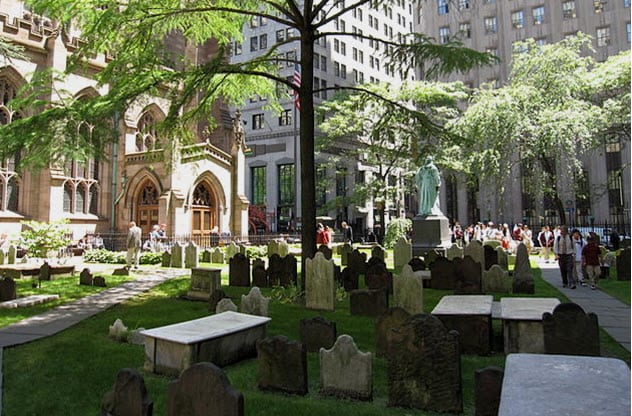
With an overwhelming population of over eight million people spread across five boroughs, New York is easily the largest city in the United States. With such a dense population, one can imagine how lively the city must be. It seems that the only place left for quiet reflection is its cemeteries.
But soon enough, these cemeteries will no longer serve as places where reverence of the past meets nostalgia for those who just walked among us. Instead, they will serve as relics of an increasingly distant past as the gravestone dates fail to keep up with the present.
For Manhattanites seeking a final resting place in their home borough, they only have one option left: Trinity Church Cemetery and Mausoleum. Established in 1697, the original churchyard is the final home to Alexander Hamilton and his wife, Elizabeth Schuyler Hamilton, son Philip Hamilton, and sister-in-law Angelica Schuyler Church. The Trinity Church Cemetery and Mausoleum is the only active gravesite left in Manhattan, and it can only accommodate aboveground burials.[1]
If you live in any other borough or are unable to secure a spot at Trinity, then your options are limited to New Jersey, the Green-Wood Cemetery, or the Cypress Hills Cemetery. The last two are both in historic Brooklyn.
At Cypress Hills, cemetery management is looking between graves to find new in-ground burial options. They have begun to dig new graves perpendicular to the road and old graves in order to use up every last inch of burial space available. At Canarsie Cemetery, also located in Brooklyn, management plans to build a whole new “town” of mausoleums to accommodate the steady demand for burial sites.
9 Hong Kong, China
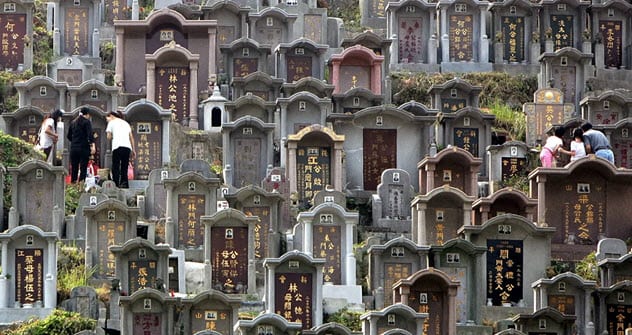
Hong Kong has always been a bustling city with trade and popular tourist attractions. So naturally, the population has climbed to a steady 7.4 million residents. While this adds to the excitement of the city, it does not leave much room for residents who wish to reside in Hong Kong after death.
Hong Kong has been struggling to find adequate burial space since the 1980s—after using some available land on the city’s hillsides to create towering step cemeteries such as the Pok Fu Lam cemetery. These cemeteries, which are already nearly full, are a common host for the Qingming (“tomb sweeping”) festival in early April.
Descendants congregate at their ancestors’ tombs and pay their respects by cleaning and maintaining their families’ tombs. In fact, family members can pay upward of $30,000 for a private grave at Hong Kong’s Tseung Kwan O cemetery, for example, because space is so limited and descendants are so willing to accommodate the final wishes of their loved ones.[2]
But for those who hope to find space in a public burial vault, the wait can be up to five years for cremated remains that sit in bags in funeral homes. By then, there may be no space left.
For those future generations wondering what options will be available to them? Well, Hong Kong’s government has proposed a rather creative solution: a floating cemetery with room for nearly 370,000 urns. This “Floating Eternity” would also provide green space for families to picnic during their visits and plenty of bamboo gardens in which to celebrate the city’s many festivals.
8 London, England
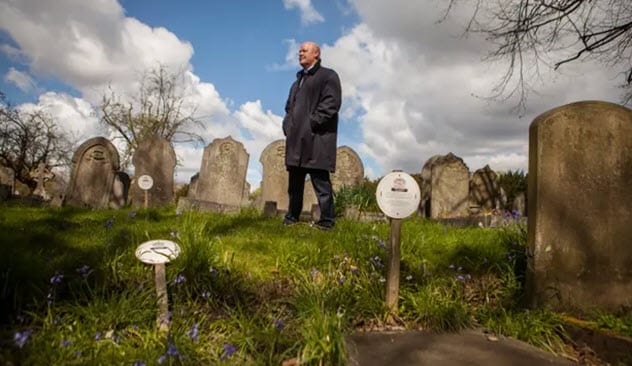
In London, posthumous realty is quickly becoming a hot commodity. Two of London’s boroughs—Tower Hamlets and Hackney—simply stopped offering burial services because they cannot accommodate any more graves. In fact, Tower Hamlets has not had any new burials since 1966.
Many cemeteries, like Tower Hamlets, have considered recycling graves. In fact, the City of London Cemetery in east London has already begun this process. After posting notices on the appropriate graves at least six months beforehand, the city exhumes coffins from graves that are 75 years or older and digs deeper graves. Then they place the old coffins at the bottom and bury new individuals on top.
In 2017, Parliament passed a law that allows cemeteries to legally reclaim and reuse one of these graves. While this solution has created considerable backlash, the alternative—clearing out woodland areas and other limited green space—is just as difficult to support. For many Londoners, this decision comes down to the preservation of family history or the preservation of vital green space.[3]
7 Philadelphia, Pennsylvania
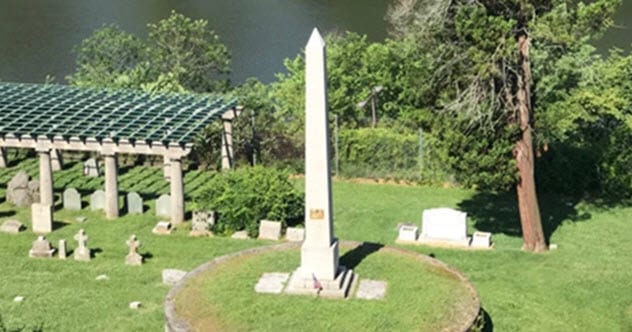
Back on American shores, the historic city of Philadelphia has run into an unusual architectural problem: Many construction sites are forced to delay progress due to the discovery of miscellaneous human remains. Shockingly, this is not a new problem for Philly construction. Newspapers reported this occurrence as early as 1851.
The city, which is home to many defunct and forgotten gravesites, has had to combat this recurring issue by creating a map of every cemetery, burial ground, and graveyard that the city has known. With the help of the University of Pennsylvania and the Philadelphia Archaeological Forum, the city has been able to create a comprehensive map of current and past burial sites.
As for current and future burials, Philadelphia residents have been forced to look to the suburbs for grave space. Laurel Hill, the city’s largest and most historic cemetery, has fought to preserve their vast green space.[4]
Built in the Victorian era, Laurel Hill has steadily expanded to become a 78-acre site that is popular among both the living and the dead. However, the cemetery has been forced to slow down the rate at which they host burials due to being at 99 percent capacity.
Now Laurel Hill Cemetery only hosts about 25 in-ground burials per year and has opened new accommodations such as private and community mausoleums, a columbarium (a space specifically built for housing urns), and a ceremonial scattering garden.
6 Venice, Italy
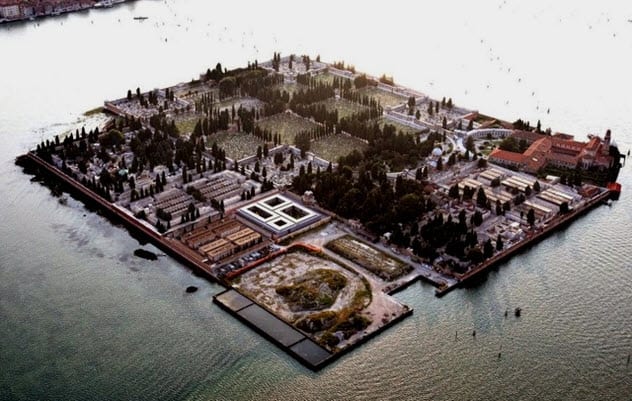
Perhaps surprisingly, this world-famous lagoon city—known for scenic gondola rides and epic bridges—is a popular final resting place for both residents and tourists. One might think, how would a city known for its waterways host a cemetery?
Well, in 1837, Isola di San Michele, an island located just off Venice’s northeast shore, was decreed the only Venetian space where burials were allowed. However, San Michele Island Cemetery is less than 2.6 square kilometers (1 mi2) in size and can only accommodate a very limited number of burials.
As such, the cemetery is traditionally only used as a temporary resting place. After 12 years, the bodies are exhumed and cremated or placed in an ossuary within the Venice city limits.
In recent years, the Venice city council passed a law allowing individuals to charter a boat 700 meters (2,300 ft) out from shore to scatter the ashes of their loved ones. For individuals wishing to scatter ashes on the land, the city has also allotted a small garden on San Michele where this is sanctioned.[5]
5 Singapore
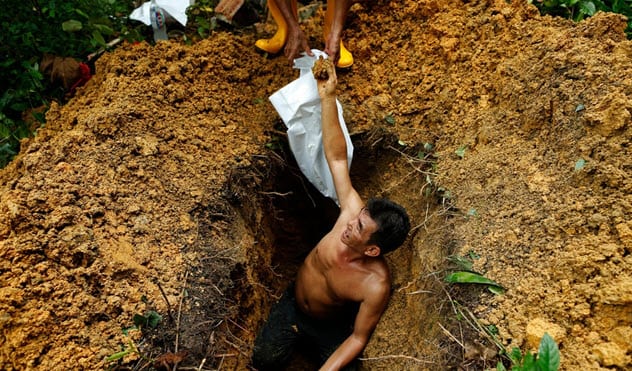
In Singapore, land for burial sites is becoming harder to obtain for vastly different reasons. In search of available land for new highways and shopping centers, Singapore has begun exhuming graves to clear space for such infrastructure developments.
In the city-state’s Bukit Brown Cemetery, nearly half of the existing 100,000 graves have been exhumed for a new eight-lane highway passing through the center of the cemetery. But the construction does not stop there. Singapore’s Ministry of National Development plans to devote the remaining land of Bukit Brown Cemetery to housing and apartment complexes for the city-state’s increasing population.
A similar process, which met with public discontent, began in the early 2000s in Singapore’s historic Bidadari Cemetery. Bodies were exhumed, and remains were either relocated or cremated. For Muslim graves, a new underground crypt was built that would accommodate religious practices while also using as much available space as possible.[6]
Both the Bukit Brown and the Bidadari cemeteries closed for in-ground burials in the mid- to late 1900s but remained available for cremations and columbarium burials. Even in one of Singapore’s active cemeteries, Choa Chu Kang, space is being cleared for the creation of public buildings and roadways. As a result, Singaporeans are looking to cremation and columbarium burials in hopes of preserving the permanence of their final resting places.
4 Tel Aviv, Israel
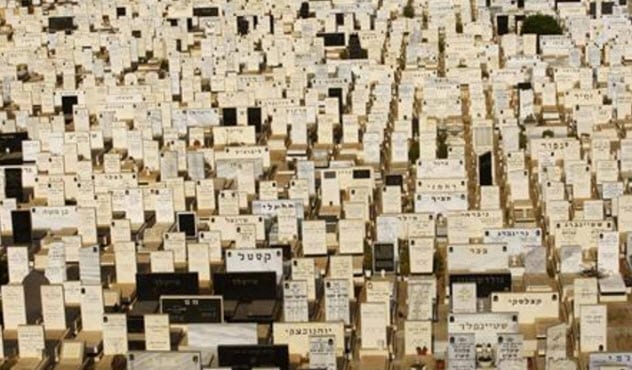
According to Jewish religious practices and Halachah, any out-of-ground burial, including cremation, is banned due to the belief that God created our bodies as sacred. Therefore, we must return our bodies to the Earth and the Creator.
As a result, burial space in Israel—already near capacity—is doubly hard to come by because any possible solutions are limited. To combat this, Israeli officials have suggested that the nation look at “high-density burials.” This has manifested in the Kiryat Shaul Cemetery in Tel Aviv with the creation of a four-story burial complex.
But why doesn’t this complex violate the in-ground burial stipulation?
Simple. The architects designed the building to look like rolling hills with flowers and shrubbery growing along its outer walls. To further abide by Halachah, each story has a dirt floor with a column of dirt connecting it to the subsequent floor below until that column reaches to the very ground upon which the structure is built.
Also observing the Jewish law that the dead be buried as individuals, each burial chamber is separated by cement walls. While risky, this practice was received well by the public.[7]
3 Netherlands
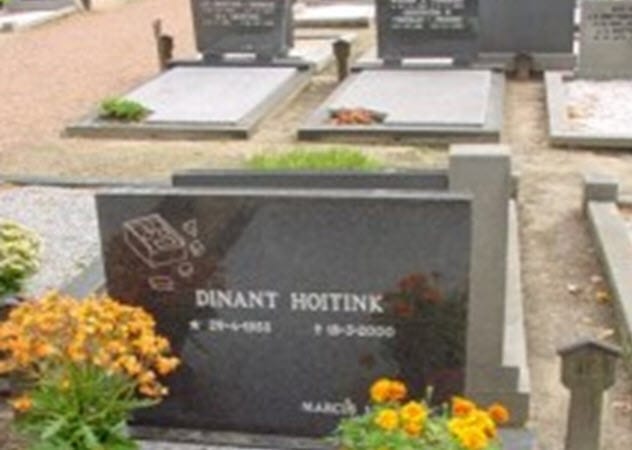
With the Netherlands known for its water usage innovations and eco-friendly waste management practices, it is no surprise to find that the country has extended its recycling policies to its graveyards. Due to poor soil conditions and high underground water tables, the Netherlands already had limited options when it came to cemetery building.
As a result, they have only allowed citizens to rent out gravesites for 20 years. At that point, relatives can decide to extend the lease or to give up the space. If no relatives reach out within six months of a notice posted to the gravestone, then cemetery management relocates the deceased to a communal plot.
The only exceptions to this law are Jewish cemeteries where Jewish law does not allow graves to be exhumed or relocated. However, tracking down next of kin can be tricky for “general graves” that have up to three unrelated individuals buried in the same plot. Due to this and a general disdain for disturbing the dead, exhuming the graves with expired leases is more difficult to enforce in practice.[8]
2 Australia
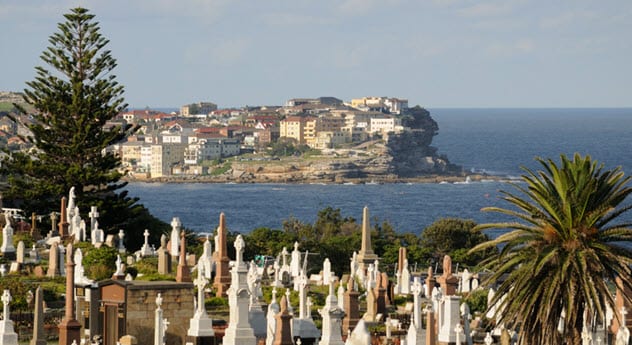
In the Land Down Under, it is increasingly difficult to find space 1.8 meters (6 ft) under. A controversial 2018 law stated that relatives of the deceased could rent burial plots for 25–99 year periods. Once the leases are up, if the relatives cannot be reached or do not contact the cemetery within two years of lease expiration, then the cemetery is legally allowed to reclaim the graves by exhuming the bodies and moving the bones to a communal ossuary.[9]
Another less controversial but less common option is that of a natural “green” burial in Bunurong Memorial Park, a cemetery near Dandenong. Within the park lies Murrun Naroon, or “Life Spirit”—a heavily wooded area set aside for natural burials without coffins or headstones.
A “green” burial consists of the body of the deceased being wrapped in a decomposable shroud with a plastic GPS tracker attached. Over time, the body and shroud will naturally decay in the earth to provide nutrients and new life for the native Australian flora.
However, the GPS tracker will remain behind—buried in the ground—so that descendants can visit their ancestor’s final resting place and soak up the new life left in his stead.
1 Tokyo, Japan
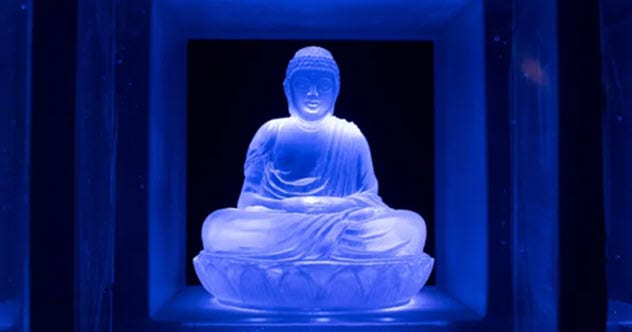
The cemeteries of Tokyo have been combating limited grave space for two generations. In the 1970s, Tokyo built its only locker cinerarium to preserve in-ground burial space. This type of burial is not common due to Japan’s long tradition of honoring ancestors in family burial spaces surrounding beautiful Buddhist temples.
However, by the mid-1960s, available burial space within Tokyo’s Buddhist temples was nonexistent. As a result, Tokyo’s inhabitants resorted to faraway gravesites, such as Kamakura and Mount Fuji, which still offered serene spaces perfect for reflection. However, this solution was a temporary one that ended up being far too expensive for the average Tokyo family.
As a result, the Ruriden columbarium was built to meld centuries-old tradition with modern Japanese culture. The Ruriden, which allows relatives of the deceased to access their loved one’s urns via an electric card, preserved the burial urns upon a small alter next to a Buddha statue.[10]
Situated behind glass, these urns light up when the electric card is swiped so that family members can easily locate their loved one’s remains. After 33 years, the urns are relocated to a crypt beneath the structure’s floor.
Read about mysterious graves on 10 Mysterious Graves That Defy Explanation and Top 10 Hidden Grave Sites Found With Satellite Images.








